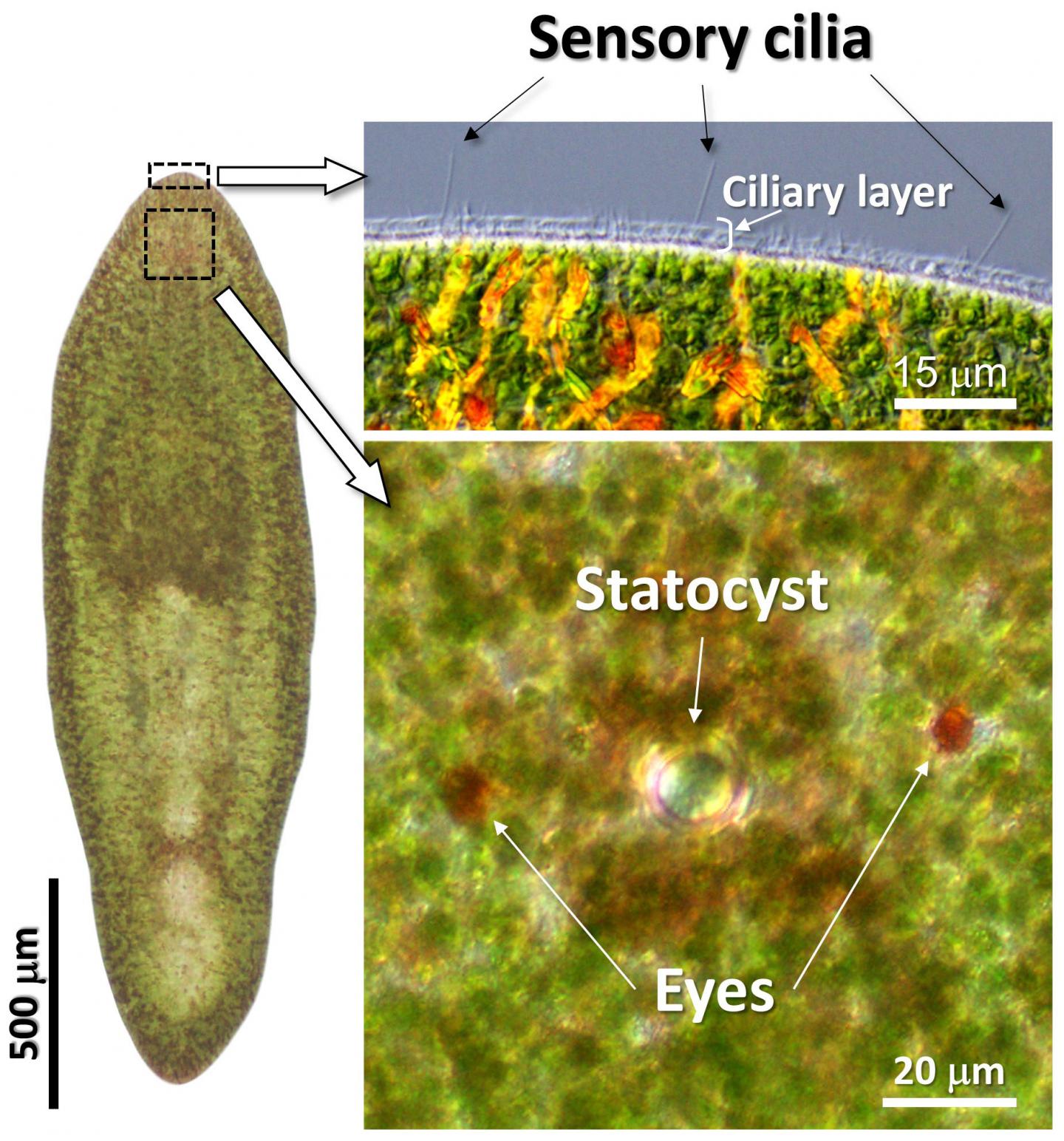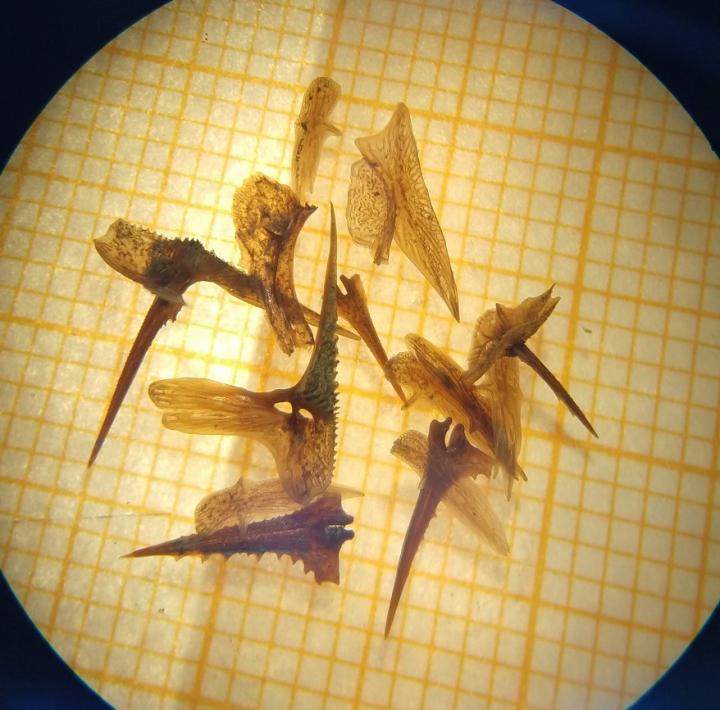Whales are largely protected from direct catch, but many populations’ numbers still remain far below what they once were. A study published in the journal Current Biology on June 3 suggests that, in addition to smaller population sizes, those whales…
Tag: MARINE/FRESHWATER BIOLOGY
Life stage differences shield ecological communities from collapse
A new study by ecologist André de Roos* shows that differences between juveniles and adults of the same species are crucial for the stability of complex ecological communities. The research, published in Proceedings of the National Academy of Sciences , represents a major…
Looking for mussels? A dog just might be your best friend for that, too
It is estimated that canines possess up to 300 million olfactory receptors in their nose, compared to about 6 million in humans. Not only that, but the part of a dog’s brain devoted to analyzing smells is about 40 times…
New technology ‘listens’ for endangered right whales
One of the world’s most endangered whale species could have added protection from threats posed by human marine activity, through technology developed by the University of East Anglia (UEA). In partnership with the Scottish Association for Marine Science (SAMS) and…
URI scientists discover function of microbes living in oysters
Research may inform coastal management, ecosystem health, aquaculture
A sticky subject: Studying shellfish for advanced adhesives
Don’t look now, but you’re surrounded. Really. Within arm’s reach – probably even touching you – are troublesome, sticky, potentially even toxic, substances. Bad for the planet, permanent, maybe even bad for your health. They’re in your shoes, in your…
World’s lakes losing oxygen rapidly as planet warms
Changes threaten biodiversity and drinking water quality
Biologists find invasive snails using new DNA-detection technique
Invasive species, beware: Your days of hiding may be ending. Biologists led by the University of Iowa discovered the presence of the invasive New Zealand mud snail by detecting their DNA in waters they were inhabiting incognito. The researchers employed…
Turning the tables — how table corals are regenerating reefs
Table corals are regenerating reefs
Small ‘snowflakes’ in the sea play a big role
New findings from scientists of Bremen will aid in the further development of biogeochemical models that include the marine nitrogen cycle
New ‘Swiss Army knife’ cleans up water pollution
First used to soak up oil in water, new sponge sequesters excess phosphate from water
Plastic in Galapagos seawater, beaches and animals
Plastic pollution has been found in seawater, on beaches and inside marine animals at the Galapagos Islands. A new study – by the University of Exeter, Galapagos Conservation Trust (GCT) and the Galapagos Science Center – found plastic in all…
Research shows potential new sunscreen is coral-safe and provides more UVB/UVA protection
Scientists find that Methylene Blue could be an effective alternative to sunscreens that cause coral damage
Antarctic hotspot: Fin whales favour the waters around Elephant Island
Sound recordings show: the baleen whales use the island’s krill-rich waters virtually year-round, which is why it needs to be protected
Chimaeroid from Early Cretaceous reassessed in light of new data
A paper went out in Journal of Vertebrate Paleontology
Reef-building corals and the microscopic algae within their cells evolve together
Genetics of coral-algal partnerships may have conservation implications
Declining biodiversity in wild Amazon fisheries threatens human diet
Similar trends are seen around the world
Climate change-resistant corals could provide lifeline to battered reefs
Corals that withstood a severe bleaching event and were transplanted to a different reef maintained their resilient qualities, according to a new study led by Katie Barott of the University of Pennsylvania
Global Fishing Watch launches new technology to enhance ocean management
Groundbreaking portal harnesses open data and machine learning to help transform management and research for critical marine areas
Effects of nanoplastics on Canadian and Guadeloupean oysters
An international research shows that the exposure of oysters to nanoplastics and arsenic could affect their biological functions
Managing global climate change–and local conditions–key to coral reefs’ survival
Australian researchers recently reported a sharp decline in the abundance of coral along the Great Barrier Reef. Scientists are seeing similar declines in coral colonies throughout the world, including reefs off of Hawaii, the Florida Keys and in the Indo-Pacific…
Seabirds sound alarm: Breeding success corresponds to hemispheric rates of ocean warming
Long-term data show fish-eating species are struggling to raise young in northern hemisphere
Seabirds face dire threats from climate change, human activity — especially in Northern Hemisphere
Many seabirds in the Northern Hemisphere are struggling to breed — and in the Southern Hemisphere, they may not be far behind. These are the conclusions of a study, published May 28 in Science , analyzing more than 50 years…
Salmon virus originally from the Atlantic, spread to wild Pacific salmon from farms: Study
Study finds Piscine orthoreovirus (PRV) is now almost ubiquitous in salmon farms in British Columbia, Canada.
UNH research: Journey of PFAS in wastewater facilities highlights regulation challenges
DURHAM, N.H.–Researchers at the University of New Hampshire have conducted two of the first studies in New England to collectively show that toxic man-made chemicals called PFAS (per-and polyfluoroalkyl substances), found in everything from rugs to product packaging, end up…
Scientists find solution to measure harmful plastic particles in human sewage
Scientists have got up close and personal with human sewage to determine how best to measure hidden and potentially dangerous plastics. As the way microplastics are measured and counted varies from place to place, there is no agreed understanding of…
Electric fish — and humans — pause before communicating key points
American writer and humorist Mark Twain, a master of language and noted lecturer, once offered, “The right word may be effective, but no word was ever as effective as a rightly timed pause.” Electric fish and today’s TED talk speakers…
Large amounts of mercury released under southwest Greenland ice sheet
Mercury pollution is an issue of global concern due to its toxic effects. High levels have already been measured in Arctic organisms – with worrying effects on ecosystems and the food chain. So far, the Greenland Ice Sheet has not…
Aquaculture turns biodiversity into uniformity along the coast of China
Fishery and aquaculture have given rise to an enormous uniformity in the diversity of bivalves along the more than 18,000 kilometer long Chinese coast, biologist He-Bo Peng and colleagues report in this month’s issue of Diversity and Distributions . Climate…
A plant-fungus partnership is at the origin of terrestrial vegetation
A long-standing theory assumes that terrestrial plants could only have developed by entering into a symbiosis with fungi, whereby the two organisms exchange resources in a mutually beneficial way. A new study by an international group of scientists has now…
Widespread coral-algae symbioses endured historical climate changes
UNIVERSITY PARK, Pa. — One of the most important and widespread reef-building corals, known as cauliflower coral, exhibits strong partnerships with certain species of symbiotic algae, and these relationships have persisted through periods of intense climate fluctuations over the last…
“Scuba-diving” lizards use bubble attached to snout to breathe underwater
BINGHAMTON, N.Y. – A team of evolutionary biologists including faculty at Binghamton University, State University of New York have shown that some Anolis lizards, or anoles, have adapted to rebreathe exhaled air underwater using a bubble clinging to their snouts…
Whale carcasses help answer mysteries of elusive species
Summary: A new study published by the open access publisher Frontiers shows the usefulness of opportunistically collected specimens, such as stranded carcasses, to study elusive species. The researchers used stable isotope analysis of skin, muscle, and bone tissue of Sowerby’s…
Egyptian fossil surprise: Fishes thrived in tropics in ancient warm period, despite high ocean tempe
Photos and Map The Paleocene-Eocene Thermal Maximum, or PETM, was a short interval of highly elevated global temperatures 56 million years ago that is frequently described as the best ancient analog for present-day climate warming. Fish are among the organisms…
As water sources become scarce, understanding emerging subsurface contaminants is key
USC researchers modeled complex subsurface water flow to help assess the risk of contaminants appearing in high, unsafe concentrations in variable water sources.
Surge in nitrogen has turned sargassum into the world’s largest harmful algal bloom
FAU Harbor Branch unique historical baseline (1983-2019) reveals dramatic changes in composition of sargassum
Deep and extreme: Microbes thrive in transition
A diverse microbial community has adapted to an extremely salty environment deep in the Red Sea. The microbes, many unknown to science, occupy a one-meter-thick area overlying the Suakin Deep, an expansive 80-meter-deep brine lake, 2,771 meters below the central…
New fishing tech may pose risks to fisheries, says study co-authored by UMass researcher
Scientists need to work closely with resource management agencies to assess impacts
How do clownfish earn their stripes?
The distinctive white stripes in clownfish form at different rates depending on their sea anemone hosts, a PNAS study finds

Telling up from down: How marine flatworms learn to sense gravity
All living organisms are equipped with sensory organs to detect changes in their surrounding environment.
Biodiversity devastation: Human-driven decline requires millions of years of recovery
A new study shows that the current rate of biodiversity decline in freshwater ecosystems outcompetes that at the end-Cretaceous extinction that killed the dinosaurs: damage now being done in decades to centuries may take millions of years to undo. The…
Telling up from down: How marine flatworms learn to sense gravity
Zoologists explore the mechanism and development of gravity-sensing ability in marine acoel flatworms
Who’s in this ocean? Tracking down species on the go using environmental DNA
Sloughed off skin and bodily fluids are things most people would prefer to avoid. But for marine biologist like Cheryl Lewis Ames, Associate Professor of Applied Marine Biology in the Graduate School of Agricultural Science at Tohoku University (Japan), such…
Technique uses fluctuations in video pixels to measure energy use of developing embryos
Scientists have made a major breakthrough in the study of embryonic development and how it can be impacted by external factors such as climate change. Researchers at the University of Plymouth have developed a cutting edge technique which enables them…
What makes some oysters more resilient than others?
New research by Louisiana State University biologists offers insight into this commercially important species
Survival of migrating juvenile salmon depends on stream flow thresholds
New understanding of relationship between stream flows and salmon survival provides a critical tool for balancing water needs in the highly managed Sacramento River
Solving a natural riddle of water filtration
For many engineers and scientists, nature is the world’s greatest muse. They seek to better understand natural processes that have evolved over millions of years, mimic them in ways that can benefit society and sometimes even improve on them. An…

How a small fish coped with being isolated from the sea
The last ice age ended almost 12 000 years ago in Norway. The land rebounded slowly as the weight of the ice disappeared and the land uplift caused many bays to become narrower and form lakes.
How a small fish coped with being isolated from the sea
12000-year-old fish bones shed light on evolutionary processes.
CT scans offer new view of Lake Malawi cichlid specimens in Penn State museum
Modern technology aids effort to characterize fish species in huge southern Africa water